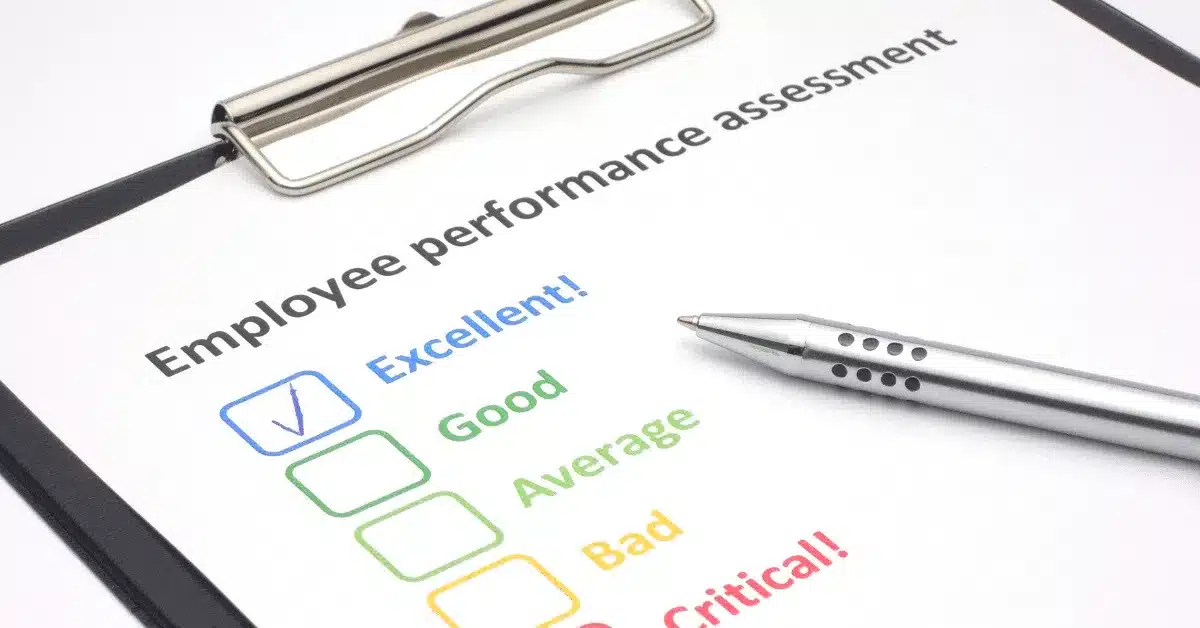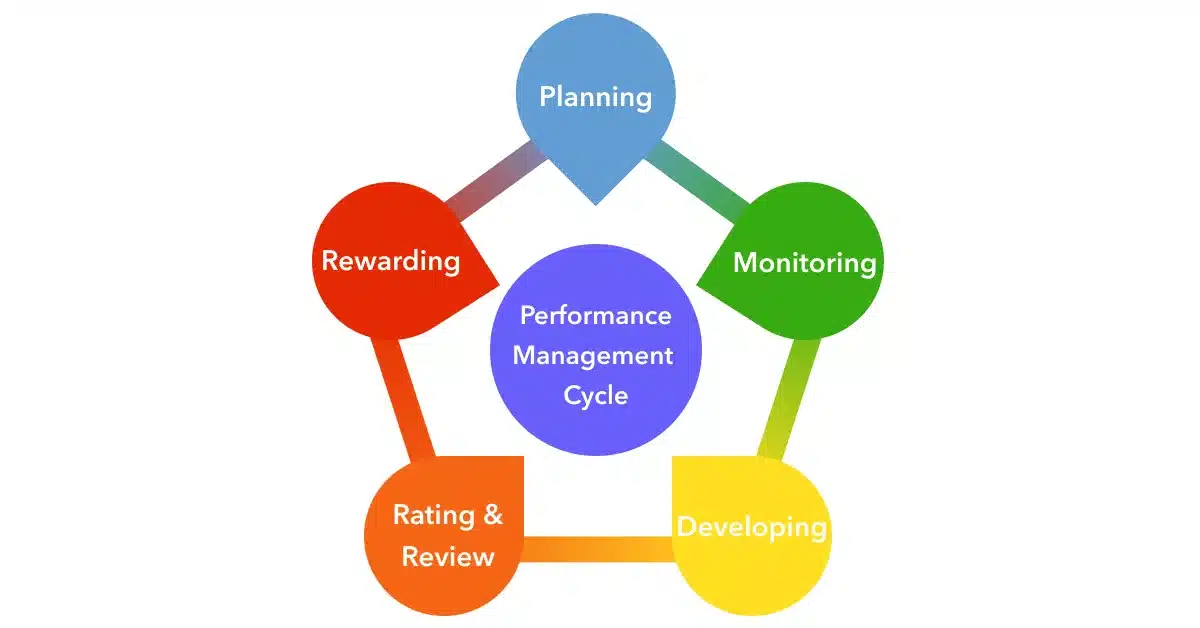Implementing correct Performance Management practices inside an organization can be difficult. In this blog, we have shared 18 best practices in Performance Management followed across the globe by successful startups.
Increasingly, startups are understanding that in this hypergrowth environment the performance review systems of the 20th-century won’t work and it has to be more complete and continuous to stand strong in this competitive market.
According to research done by Forbes old school methods of performance reviews like yearly appraisals, are outdated and have a negative impact on employee engagement and motivation. In light of this, more startups are focusing on performance management and looking for best practices of performance management relevant to a hypergrowth environment.
In this blog, we have listed 18 practices of performance management relevant to startups.
18 Best Performance Management Strategies to Elevate Your Team’s Success
| No. | Practice |
|---|---|
| 1 | Set Clear Intentions for Success |
| 2 | Adaptable Goal Setting |
| 3 | Empowering with OKRs |
| 4 | Clarity in Role Distribution |
| 5 | Real-Time Goal Adjustments |
| 6 | Keep Conversations Flowing |
| 7 | Ongoing Performance Snapshots |
| 8 | Feedback that Moves the Needle |
| 9 | SOPs for Smarter Workflows |
| 10 | Keep Skills Fresh with Training |
| 11 | Feedback from All Angles |
| 12 | Step into Their Shoes |
| 13 | Celebrate Wins Publicly |
| 14 | Lifting Up Underperformers |
| 15 | Fine-Tune Goals with KPIs |
| 16 | Foster Trust in Performance Reviews |
| 17 | Make Feedback a Two-Way Street |
| 18 | Supercharge Performance with Tech |
Want to dive deeper into each point? Keep reading below for a detailed explanation of every practice.
1. Set Clear Intentions for Success
For the best performance management practices, it is important to identify the desired final outcome. The managers must identify what they want to achieve through these practices.
This will provide a clear direction to proceed. If the goal is to increase productivity, consistently hard-working employees can be recognized. Similarly, if the goal is to develop leaders, the employee with maximum team spirit should be appreciated and presented as an example.
2. Adaptable Goal Setting
It is difficult to differentiate goal setting from performance expectations.
The goals should be specific and measurable yet, supple and flexible. Setting smart goals is crucial. Instead of one big goal, it is better to break it into small tasks. This also makes the tracking process easier.
3. Empowering with OKRs
Employees should be asked to set their own OKRs. Post that there should be an open discussion regarding the objective and key results. Feedback from the employees must also be valued and if possible included as a part of goal setting.
4. Clarity in Role Distribution
Having clarity about the work and the designated responsibility is very much important. While setting the goal the role of every member of the team should be described explicitly. There should be no room for doubt.
5. Real-Time Goal Adjustments
A performance plan must go alongside the work plan. Having a big goal broken into small tasks has great advantages. It gives the leverage of revising the terms as per the need of the project and employees.
6. Keep Conversations Flowing

Discussing progress and difficulties in real-time help in achieving better performance. Regularly scheduled discussions are important to make sure that everything goes as per the plan.
7. Ongoing Performance Snapshots
Reviewing performances through regular use of metrics and analytics is important. It assures that the employee understands his role in the project and is able to perform up to his potential.
8. Feedback that Moves the Needle
Providing random feedback can confuse the employees. The feedback must be on-time, clear & descriptive, and practically applicable. It is the responsibility of the senior to resolve the issues with minimum hassle.
9. SOPs for Smarter Workflows
Standardized protocols can be framed to deal with the frequently encountered problems. The guidelines can be structured based on research and experiments. The results of previous Performance Management practices can also be used.
10. Keep Skills Fresh with Training
Training is not only meant for employees. The managers also need to learn new methods of management. Therefore, regular training is vital for the overall improved performance of your start-up. The gap between training sessions should be decided considering the requirements of the employees.
11. Feedback from All Angles

Instead of relying on a single source for feedback, it is better to have multiple sources. The different sources can be performance management software, feedback from seniors, peer reviews, etc.
These help in a better understanding of challenges and get a broader outlook about the performance of an employee. Also, confidentiality must be maintained throughout the process.
Further, feedback cannot just be one way. There must be 360° feedback that should be viewed under a holistic lens.
12. Step into Their Shoes
A problem must also be analyzed from the perspective of the employee dealing with it. There can be several external factors responsible for a problem. Doing this helps in knowing the actual reason for the problem, instead of blaming it on a person.
13. Celebrate Wins Publicly
An employee must always know that he is recognized for his hard work. Also, his work must be presented as an example in front of other employees. Rewarding the outstanding performers openly and frequently helps in setting benchmarks for others to follow.
14. Lifting Up Underperformers
It is equally important to motivate low performers. It is better to avoid discussing mistakes publicly. Also, a gap should be maintained between pointing out professional errors and finding personal flaws.
15. Fine-Tune Goals with KPIs
The key performance indicators can be used to re-evaluate the targets assigned to an employee. For example, if the work profile of an employee includes getting a targeted number of customers, his KPI can be the “number of customers added per month”.
A book by David Parmenter named Key Performance Indicators: Developing, Implementing, and Using Winning KPIs talks about a six-stage implementation plan for the selection of befitting KPIs.
16. Foster Trust in Performance Reviews
The employees must trust their company for its honest evaluation processes. This can be done by making the employees part of the Performance Management plans.
It should be clear that each one of them is an indispensable part of the process.
This would help make the Performance Management process more effective and reliable.
17. Make Feedback a Two-Way Street
The outcomes of the analysis & results of Performance Management must be shared and discussed with the employees. It is equally crucial to invite their opinions and take them into account. This will help them understand their needs and develop better practices.
18. Supercharge Performance with Tech
There are performance management software’s available in the market that will help you ease your Performance Management process through their features like goal setting, goal review, surveys, and feedback processes.
What is Performance Management?

‘Performance Management refers to the methods and techniques that a company adopts to assess and improve the productivity of employees. It focuses on creating an environment that can bring the best out of the people.’
This system is especially useful in helping start-ups to assess their work culture. It can mean reviewing and revising practices such as selection and training programs. It may also be beneficial in suggesting improvements, as per the desired results.
Good Performance Management practices help in bringing out the true potential of an employee. It may also suggest measures to sustain similar performances in the future.
By following these practices the Managers or Supervisors can frame standardized protocols. These protocols can be used as workbooks while dealing with employees.
The work pattern of a company can be improved using Performance Management practices. This can help in making better decisions. Thus, making tasks like Project allotment, setting deadlines, and achieving goals, easier.
The Performance Management Cycle is traditionally an all-year-long process and has four steps. They are planning, monitoring, developing, analyzing, and rewarding.

5 Reasons Why Performance Management System is Important
1. Boosts Employee Engagement
Performance management fosters consistent communication and feedback, helping employees feel valued and involved. It creates a culture of accountability and transparency, where employees clearly understand expectations and receive recognition for their contributions.
2. Enhances Productivity
Regular performance tracking and goal-setting help employees align their work with organizational objectives, leading to improved productivity. Startups, in particular, benefit from this structured approach as it keeps teams focused on high-priority tasks.
3. Improves Employee Retention
Employees who feel recognized and guided through performance reviews are more likely to stay with the company. Performance management systems help build trust and provide clear pathways for professional growth.
4. Facilitates Skill Development
Through continuous feedback and personalized training plans, employees can identify areas for improvement and work towards enhancing their skills. This is particularly important in startups, where multitasking and continuous learning are often required.
5. Drives Better Business Outcomes
Organizations that regularly monitor and support employee performance can make data-driven decisions to enhance business growth. An effective performance management system ensures that employees’ efforts are aligned with the company’s strategic objectives, leading to sustained success.
Benefits of performance management
- Understanding the needs of employees: Regular checks can help to identify fundamental issues. A manager can easily understand if an employee needs extra support or just a push to work better.
- Boosts performance & engagement: Regular interactions with employees make them feel valued. This helps boost their regular work performances as well as their engagement and devotion towards the Company.
- Developing bond: Communication is the soul of any relationship. The routine discussions help develop a connection between an employee and his superiors. This encourages the employees to accept their mistakes, face their fears, and improve their performance.
- Reducing differences: Conflict management inside a start-up is very crucial. It helps to address and resolve the issues at an initial stage. Regular group discussions help employees to understand and respect the perspectives of others. This reduces the frequency of differences.
- Quick redressal: Routine tracking can help pinpoint the issues, as well as their source and cause. This makes problem-solving very easy.
Know the relevance of the performance management bell curve method
5 real-world examples of best practices in performance management

Here are five real-world examples that show how these best practices come to life in successful organizations.
1. Valve
The well-reputed software company “Valve Corporation” is also known for its Performance Management system. ‘Kudos’ a Performance Management tool released by the company helps employees to recognize each other.
The company focuses on goal settings, employee recognition, and employee feedback as parameters for Performance Management. ‘Kudos’ allows the employees to leave their ideas on the software project as notes. These notes are later read by team leads who, if needed, may modify the project plan.
2. General Electric
The company is on 8th rank in the Fortune 500 list. They have been maintaining a formal Performance Management team for decades. The company expects the managers to guide and coach the employees. Although the meeting is held once every year, the framework is flexible and the goals are supple. Further, the company is also in the process of launching its Performance Management app.
3. Lilly
It is one of the leading and most reputed pharmaceutical companies in the world. They have employed some of the most amazing Performance Management practices. This includes job sharing, family assistance perks, etc. The company sticks closely to the “trust” theme. The company believes that a healthy and strong partnership must exist between employees and superiors.
4. Google
Google is known to have the most creative and informal set of techniques for Performance Management. They actually use OKRs methodology to help their employees. The company continuously works to guide its employees toward achieving goals.
John Doerr has quoted that “It took a couple of iterations, but we figured out the right cadence and model, and to this day [at Google], Larry [co-founder of Google and now CEO of Alphabet] writes his own personal OKRs and Google’s corporate OKRs every quarter.”
5. Facebook
For years Facebook has maintained its number one position in the list of ‘world’s best places to work.’ Alongside the regular manager-to-employee review, Facebook also conducts peer-to-peer and employee-to-manager reviews.
Further, internal software for Performance Management allows the employees and managers to give and receive real-time feedback.
Conclusion
Every employee wants to give their best. It is majorly the responsibility of the management to help them discover their true potential. This can be accomplished by incorporating the Best Practices in Performance Management mentioned above in your organization. The right mindset of management combined with the right set of technology can help achieve desired goals.
What is performance management, and why is it important for startups?
Performance management refers to methods and techniques used by organizations to assess and improve employee productivity. For startups, it is crucial because it helps boost engagement, retain talent, align employee efforts with company goals, and make data-driven decisions to achieve growth in a hypercompetitive environment.
What are some examples of companies that successfully implement performance management practices?
The blog highlights successful companies like Valve, General Electric, Lillyt, Google, and Facebook. For instance, Valve uses a tool called ‘Kudos’ for peer recognition, while Google employs OKRs (Objectives and Key Results) to set clear and measurable goals. Facebook integrates peer-to-peer and manager-to-employee reviews through an internal performance management tool.
What challenges do startups face when implementing performance management systems?
Startups often face challenges such as lack of resources, unclear goals, and resistance to change. Additionally, traditional annual performance reviews may not suit the fast-paced nature of startups, requiring a shift to more agile, continuous feedback systems. The blog suggests adopting flexible and employee-centric approaches to overcome these challenges.
How can startups effectively implement performance management practices?
Startups can adopt practices like setting clear OKRs, providing actionable feedback, conducting regular check-ins, and using performance management software. These practices help create a structured and transparent approach to assessing and improving employee performance, fostering a culture of continuous growth.






